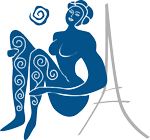Vascular Surgeon
Expert in the treatment of varicose veins
How do the veins in the legs work ?
What is good circulation ?
Functioning of the leg veins
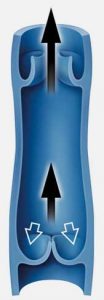
figure 1
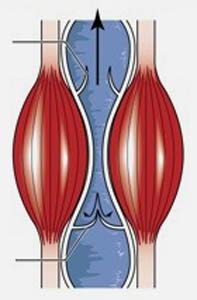
figure 2
The veins in the legs are blood vessels whose main role is to bring oxygen-poor blood back to the heart, so that it can be oxygenated again by the lungs.
To allow the blood to flow back upwards, even when standing, the veins are equipped with anti-reflux valves, which allow the blood to flow only upwards towards the heart, preventing it from flowing back towards the feet (figure 1).
During leg movements, especially when walking, the muscular contractions of the calf squeeze the veins, pushing the blood upwards, thanks to the valves (figure 2).
Organization of veins in the legs
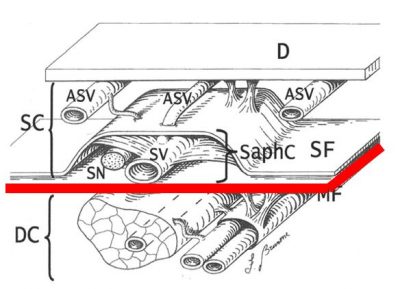
figure 3
There are two types of veins in the legs (Figure 3) :
- Superficial veins: located between the muscles and the skin (D), in the subcutaneous compartment (SC). They ensure the circulation of the superficial tissues of the leg (skin and fat) and they are the seat of varicose veins and superficial phlebitis.
- Deep veins: located inside or between the muscles, in the deep compartment( DC). They ensure the circulation of the deep tissues of the leg (muscles and bones) and they are the seat of deep phlebitis.
Superficial and deep veins are very numerous, organized in a network with many communications within each superficial and deep compartment.
The two compartments, superficial and deep, are also connected by communication channels: two main “junctions”, one at the groin and one behind the knee, as well as by numerous perforating veins, scattered throughout the leg.
Anatomy of superficial veins
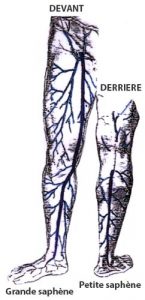
figure 4
Superficial veins are organized around two main axes, called the saphenous veins (Figure 4):
- The great saphenous vein travels inside the calf and thigh, from the inside of the ankle to the groin crease
- The small saphenous vein, which is shorter, travels behind the calf, from the outside of the ankle to the hollow of the knee.
There are numerous branches which ensure drainage of the subcutaneous space of the calf and thigh: these are the tributary veins, which join all the saphenous veins.
The layout of this network is thus reminiscent of a tree, the trunk of which is the saphenous vein and the branches the tributaries.
What is good venous circulation in the legs ? What promotes it ?
A good venous circulation allows the oxygen-poor blood present in the tissues (skin, fat, muscles, bones) to flow up the leg to reach the heart by passing through the abdomen and the thorax.
This pathway is quite easy in the supine position, especially if the feet are slightly elevated, the legs being at the level of or above the heart, the flow is done without difficulty.
On the other hand, in the standing position, gravity tends to prevent the blood from flowing upwards and to trap it in the lower part of the legs. But thanks to the non-return valves present in the veins of the legs (see above) the venous blood cannot go back down and it can be evacuated upwards by the movement of the muscles which squeeze the veins (figure 2).
The muscular activity of the calf therefore favors the drainage of the leg veins towards the heart, thus ensuring excellent circulation. Thus, physical activity, primarily walking, is the main element that promotes good venous circulation in the legs.
